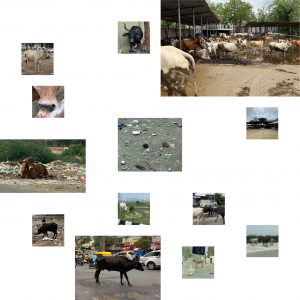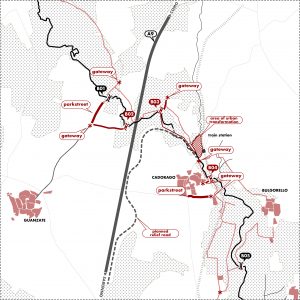Infrastructural urbanism, as portrayed by Stan Allen (2001), has played a key role in redefining the modern city as a network of flows, connections, and functional systems. Keller Easterling (2014) built upon this view by highlighting how infrastructures are not entities only in their physical forms, but they embed multiple degrees of relationship and symbiosis with the city and its structures. Reading infrastructures mainly through technical and systemic perspectives often overlooks issues related to spatial quality, ecological harmony, and publicness or the space. Designed and built by engineering firms and transport operators, they tend to create efficient but often insensitive environments – thinking about ring roads, railways, and airports – that improve circulation but also fragment landscapes and leave behind neglected margins.
Building upon ongoing doctoral research on European ring roads, with the case study of Milan, this contribution positions these infrastructures as clear examples of contradictions within infrastructural urbanism. Ring roads create vast interstitial spaces: buffer zones, ecological boundaries, and margins of in-betweenness that challenge traditional urban classifications. These spaces reflect the concerns of Secchi and Viganò (2011) about the modern city’s focus on territories, where marginal and infrastructural landscapes become key areas of urban change.
How can architecture be adopted not as a patch, but as a critical mode of investigation capable of mediating between technical performance and spatial experience? Through mapping, taxonomy construction, and strategic scenarios – tested in the research of ring-road territories – design can articulate and enable conditions for transitional ecologies and public space re-appropriation, and frame conditions rather than prescribing fixed functions for the infrastructural voids.
If infrastructural urbanism explains the city as a system, architecture reclaims it as space. By reframing infrastructural margins through experimental patterns, this contribution argues that mobility infrastructures can evolve beyond their logistic function and instead enable different forms and concepts for a renovated approach to urban mobility.
Bibliography
- Allen, S. (2001). Points + Lines: Diagrams and Projects for the City. New York: Princeton Architectural Press.
- Easterling, K. (2014). Extrastatecraft: The Power of Infrastructure Space. London: Verso.
- Viganò, Paola. Territorio dell’urbanistica. Il progetto come produttore di conoscenza. Rome: Officina, 2010.



